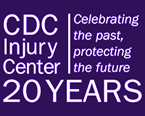Saving Lives and Protecting People:
Prevention of Prescription Painkiller Overdoses
Print Version [pdf 390K]For every 1 overdose death from prescription painkillers there are…

- 10 treatment admissions for abuse
- 32 emergency department visits for misuse or abuse
- 130 people who abuse or are dependent
- 825 people who take prescription painkillers for nonmedical use
Overdose deaths have skyrocketed in the past decade, largely because of prescription painkillers. The stories are tragic: A father whose addiction to prescription painkillers ended in a fatal overdose. A teen who died after taking prescription painkillers stolen from a friend’s grandmother. Seven members of one community who overdosed on painkillers they got from a pain clinic.
Overdoses of prescription painkillers have more than tripled in the past 20 years, leading to 14,800 deaths in the United States in 2008.1,2
Overdose deaths are only part of the problem—for each death involving prescription painkillers (also called opioid or narcotic pain relievers), hundreds of people abuse or misuse these drugs1:
- Emergency department visits for prescription painkiller abuse or misuse have doubled in the past 5 years to nearly half a million.3
- About 12 million American teens and adults reported using prescription painkillers to get “high” or for other nonmedical reasons.3
- Nonmedical use of prescription painkillers costs more than $72.5 billion each year in direct health care costs.3
Putting Science into Action to Prevent Prescription Painkiller Overdoses
CDC’s National Center for Injury Prevention and Control (Injury Center) is committed to saving lives and protecting our nation from injuries and violence.

Enough prescription painkillers were prescribed in 2010 to medicate every American adult around-the-clock for one month. Although most of these pills were prescribed for a medical purpose, many ended up in the hands of people who misused or abused them.3
Preventing prescription painkiller overdoses is one of the Injury Center’s focus areas. Here are just a few examples of the Injury Center’s efforts in this focus area:
Improving Systems to Track Prescriptions and Identify Misuse
- The Injury Center is researching ways to enhance state prescription drug monitoring programs, which track prescriptions for controlled substances (such as prescription painkillers). In addition, the Center is collaborating to improve federal data systems and to link state data and electronic medical records. Improved systems will provide better science to guide prevention efforts.
Identifying Prevention Policies and Programs that Work
- The Injury Center is tracking and evaluating state policies and programs, like those to prevent "doctor shopping" and "pill mills." Such policies and programs can prevent prescription painkiller misuse and overdose while ensuring access to safe, effective pain treatment for those who need it. Effective policies and programs can serve as models for other states.
Increasing Health Care Provider Accountability
- The Injury Center promotes efforts to ensure that health care providers follow science-based guidelines for safe and effective prescribing of painkillers. The increase in overdose deaths parallels a sharp rise in the sale of prescription painkillers.3 The Injury Center is tracking trends in prescribing rates and daily doses, studying differences from state to state, and identifying patterns of improper prescribing behaviors. Identifying health care providers who prescribe painkillers inappropriately could reduce overdoses and misuse.
Educating Health Care Providers, Policy Makers, and the Public
 The Injury Center’s Vital Signs: Prescription Painkiller Overdoses in the U.S. package spotlights this issue and its effect on the nation’s health. The Injury Center uses it to engage states, health care providers, insurers, and consumers in steps to prevent prescription painkiller overdoses and misuse.
The Injury Center’s Vital Signs: Prescription Painkiller Overdoses in the U.S. package spotlights this issue and its effect on the nation’s health. The Injury Center uses it to engage states, health care providers, insurers, and consumers in steps to prevent prescription painkiller overdoses and misuse. - Policy Impact: Prescription Painkiller Overdoses presents evidence-based policy approaches to help reverse the prescription painkiller overdose epidemic.
CDC’s Commitment to Prevention
The Injury Center is the only U.S. federal agency that deals exclusively with injury and violence prevention in non-occupational settings. It leads a coordinated public health approach to tackling this critical health and safety issue.
The Injury Center is committed to applying its decades of expertise to the new and rapidly growing problem of prescription painkiller overdoses. Prevention is the most effective, common-sense way to improve health and lower societal costs for medical care and loss of work related to this health issue. Our priority is to equip states, health care providers, and professional organizations with the best science, tools, and resources so that they can take effective action to curb this rising public health threat.
Join us in making injury and violence prevention the premiere public health achievement of the next decade!
For more information about prescription painkiller overdoses and the tools listed in this fact sheet, visit www.cdc.gov/injury.
Learn More
References
- Centers for Disease Control and Prevention. Vital Signs: Overdoses of Prescription Opioid Pain Relievers—United States, 1999–2008. MMWR 2011; 60: 1–6.
- Centers for Disease Control and Prevention. Vital Signs: Prescription Painkiller Overdoses in the U.S. (November 2011)[accessed 2011 Nov 1]. Available from: http://www.cdc.gov/vitalsigns/PainkillerOverdoses/index.html
- Centers for Disease Control and Prevention. Policy Impact: Prescription Painkiller Overdoses. [updated 1 Nov 2011; accessed 2011 Nov 14]. Available from: http://www.cdc.gov/HomeandRecreationalSafety/rxbrief/
Get email updates
To receive email updates about this page, enter your email address:
Contact Us:
- Centers for Disease Control and Prevention
National Center for Injury Prevention and Control (NCIPC)
4770 Buford Hwy, NE
MS F-63
Atlanta, GA 30341-3717 - 800-CDC-INFO
(800-232-4636)
TTY: (888) 232-6348
New Hours of Operation:
8am-8pm ET/
Monday-Friday
Closed Holidays - cdcinfo@cdc.gov




